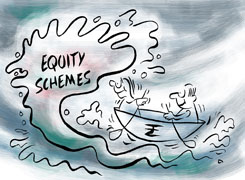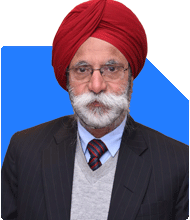Ramalingam Kalirajan |10872 Answers |Ask -Follow
Mutual Funds, Financial Planning Expert - Answered on Jun 11, 2024
He has an MBA in finance from the University of Madras and is a certified financial planner.
He is the director and chief financial planner at Holistic Investment, a Chennai-based firm that offers financial planning and wealth management advice.... more

Hi, my package is around12lpa. I hv invested in PPF for 3k SIP and 5k SIP in mutual funds, HRA with 20k monthly rent. Still I hv my tax deducted monthly around 5-8k. Can u help me in wat ways can I invest and wer do I need to invest that would help me in zero tax cut
Income and Tax Structure
Your annual package is Rs 12 lakh, translating to Rs 1 lakh per month. You currently invest Rs 3,000 in PPF and Rs 5,000 in mutual funds via SIPs. You also pay Rs 20,000 per month as rent. Despite these investments and deductions, your monthly tax deduction ranges from Rs 5,000 to Rs 8,000. Let's delve deeper into optimizing your investments and tax planning.
Monthly Breakdown
Monthly Income: Rs 1,00,000
Rent: Rs 20,000
PPF SIP: Rs 3,000
Mutual Fund SIP: Rs 5,000
Tax Deduction: Rs 5,000 to Rs 8,000
Maximizing Tax Savings
Section 80C Investments
You can claim deductions up to Rs 1.5 lakh under Section 80C. Currently, you are investing Rs 3,000 per month in PPF, totaling Rs 36,000 annually. You can optimize this section further.
Public Provident Fund (PPF)
PPF offers a safe investment with attractive interest rates and tax benefits. Continue with your current PPF SIP and consider increasing it if possible.
Current Annual Investment: Rs 3,000 * 12 = Rs 36,000
Potential Increase: Aim for Rs 1.5 lakh annually to maximize the Section 80C limit.
Equity-Linked Savings Scheme (ELSS)
ELSS mutual funds are tax-saving instruments with a lock-in period of three years. They offer the dual benefit of tax savings and potential market-linked returns.
Annual Investment: Consider allocating a portion of your Rs 5,000 SIP towards ELSS funds.
Lock-in Period: 3 years
Potential Returns: Higher than traditional instruments but with market risk.
Section 80D: Health Insurance
Premiums paid for health insurance policies qualify for tax deductions under Section 80D. This can include policies for yourself, your spouse, children, and dependent parents.
Health Insurance Premiums
Self, Spouse, and Children: Deduction up to Rs 25,000.
Parents (Below 60): Additional deduction up to Rs 25,000.
Parents (Above 60): Additional deduction up to Rs 50,000.
Benefits
Tax Savings: Up to Rs 75,000 if parents are senior citizens.
Health Coverage: Ensures financial support during medical emergencies.
Section 80E: Education Loan Interest
Interest paid on education loans for higher studies can be claimed as a deduction under Section 80E. This deduction is available for a maximum of 8 years or until the interest is fully repaid, whichever is earlier.
Education Loan Interest
Eligibility: Loans taken for higher education of self, spouse, or children.
No Upper Limit: The entire interest amount is deductible.
Section 80G: Donations
Donations made to specified charitable institutions and relief funds are eligible for deductions under Section 80G. The deduction can be either 50% or 100% of the donation amount, depending on the type of institution.
Charitable Donations
Eligible Donations: Donations to specified funds, NGOs, and charitable institutions.
Deduction: 50% or 100% of the donation amount.
Documentation: Ensure proper receipts and documentation for claiming the deduction.
Section 24(b): Home Loan Interest
Interest paid on a home loan for a self-occupied property is deductible up to Rs 2 lakh under Section 24(b). This deduction is over and above the Section 80C limit.
Home Loan Interest
Self-Occupied Property: Deduction up to Rs 2 lakh.
Rented Property: Entire interest amount deductible without any upper limit.
Principal Repayment: Eligible under Section 80C within the Rs 1.5 lakh limit.
Investment Planning
Diversifying Investments
Diversification helps in spreading risk and optimizing returns. Your current investments are a good start, but further diversification can enhance your portfolio.
Mutual Funds
Mutual funds offer a range of investment options across different asset classes. Diversify your mutual fund investments across equity, debt, and hybrid funds.
Equity Funds: For long-term growth and higher returns.
Debt Funds: For stability and regular income.
Hybrid Funds: For a balanced approach combining equity and debt.
Employee Provident Fund (EPF)
EPF is a retirement benefits scheme available to salaried employees. Contributions to EPF qualify for tax deductions under Section 80C.
Employee Contribution: 12% of basic salary.
Employer Contribution: 12% of basic salary.
Tax Benefits: Employee's contribution qualifies under Section 80C.
National Pension System (NPS)
NPS is a government-backed pension scheme offering tax benefits under Section 80C and an additional Rs 50,000 under Section 80CCD(1B).
Section 80C: Contribution up to Rs 1.5 lakh.
Section 80CCD(1B): Additional Rs 50,000.
Tax Savings: Up to Rs 2 lakh in total.
Additional Tax Saving Strategies
House Rent Allowance (HRA)
HRA can be claimed if you live in rented accommodation. The deduction is the least of the following:
Actual HRA received: Rs 20,000 per month.
50% of Salary (Metro): 50% of Rs 1,00,000 = Rs 50,000 per month.
Rent Paid – 10% of Salary: Rs 20,000 - Rs 10,000 = Rs 10,000 per month.
Optimizing HRA Claim
Ensure you have rent receipts and rental agreement documentation. Claim the maximum allowable deduction based on actual rent paid.
Leave Travel Allowance (LTA)
LTA can be claimed for travel expenses incurred for trips within India. It can be claimed twice in a block of four years.
LTA Claim
Eligibility: Travel expenses for self, spouse, children, and dependent parents.
Exemptions: Actual travel expenses (travel fare only, not food or accommodation).
Documentation: Maintain proper travel tickets and receipts.
Tax-Free Allowances and Perquisites
Certain allowances and perquisites provided by employers are tax-free. These can include meal coupons, telephone reimbursements, and conveyance allowances.
Utilizing Tax-Free Allowances
Meal Coupons: Up to Rs 50 per meal is tax-free.
Telephone Reimbursements: Actual expenses incurred for official purposes.
Conveyance Allowance: Up to Rs 1,600 per month is tax-free.
Regular Review and Rebalancing
Importance of Portfolio Review
Regularly reviewing your portfolio ensures it remains aligned with your goals and market conditions. Rebalancing helps maintain the desired asset allocation.
Quarterly Review: Assess the performance and make necessary adjustments.
Annual Review: Reevaluate your financial plan based on changes in income, expenses, or goals.
Professional Guidance
Benefits of Consulting a Certified Financial Planner (CFP)
A CFP provides personalized advice, helping you achieve your financial goals efficiently.
Tailored Strategies: CFPs design investment strategies based on your specific needs and risk tolerance.
Regular Monitoring: They monitor your portfolio and suggest timely adjustments to optimize returns.
Comprehensive Planning: CFPs assist in tax planning, retirement planning, and estate planning, ensuring holistic financial health.
Actively Managed Funds vs Direct Funds
Disadvantages of Index Funds
While index funds offer low costs, they may not provide the best returns. Actively managed funds, despite higher fees, aim to outperform the market.
Expert Management: Fund managers actively select stocks to generate higher returns.
Flexibility: Actively managed funds can adapt to market changes, potentially reducing losses.
Disadvantages of Direct Funds
Direct mutual funds require investor expertise and regular monitoring. Without professional guidance, there’s a risk of poor investment decisions.
Complexity: Direct funds demand more time and knowledge to manage effectively.
Risk of Underperformance: Investors may not achieve optimal returns without proper guidance.
Final Insights
By optimizing your tax-saving investments and making strategic contributions, you can significantly reduce your taxable income. Utilize Section 80C, 80D, 80E, and other sections effectively. Diversify your investments across different asset classes and seek professional guidance for personalized advice. Regularly review and rebalance your portfolio to stay aligned with your financial goals.
Best Regards,
K. Ramalingam, MBA, CFP,
Chief Financial Planner,
www.holisticinvestment.in
You may like to see similar questions and answers below
Ramalingam Kalirajan |10872 Answers |Ask -Follow
Mutual Funds, Financial Planning Expert - Answered on May 22, 2024
Ramalingam Kalirajan |10872 Answers |Ask -Follow
Mutual Funds, Financial Planning Expert - Answered on Jul 15, 2024
T S Khurana |536 Answers |Ask -Follow
Tax Expert - Answered on Aug 10, 2024
T S Khurana |536 Answers |Ask -Follow
Tax Expert - Answered on Feb 26, 2025
Nayagam P P |10852 Answers |Ask -Follow
Career Counsellor - Answered on Dec 07, 2025

Research Career Prospects: IISc, IITs, and Beyond: For research-oriented careers, the Integrated M.Sc Physics program at Amrita provides an exceptional foundation. Amrita's curriculum specifically aligns with GATE and UGC-NET examination syllabi, and the institution emphasizes early research engagement. The faculty at Amrita actively publish research in Scopus-indexed journals, with over 60 publications in international venues within the past five years, exposing you to active research environments.
To pursue research at premier institutions like IISc, you would typically follow the PhD pathway. IISc accepts M.Sc graduates through their Integrated PhD programs, and with your Amrita M.Sc, you're eligible to apply. You'll need to qualify the relevant entrance examinations, and your integrated program's emphasis on research fundamentals provides strong preparation. The final year of your Integrated M.Sc is intentionally structured to be nearly free of classroom commitments, enabling engagement with research projects at institutes like IISc, IITs, and National Labs. According to Amrita's data, over 80% of M.Sc Physics students secured internship offers from reputed institutions during academic year 2019-20, directly facilitating research career transitions.
Placement and Direct Employment Opportunities: Amrita University boasts a comprehensive placement ecosystem with strong corporate and government sector connections. According to NIRF placement data for the Amrita Integrated M.Sc program (5-year), the median salary in 2023-24 stood at ?7.2 LPA with approximately 57% placement rate. However, these figures reflect general placement trends; physics graduates often secure higher packages in specialized technical roles. Many graduates join software companies like Infosys (with early offers), Google, and PayPal, where their strong analytical and computational skills command competitive compensation packages ranging from ?8-15 LPA for entry-level positions.
The Department of Corporate and Industrial Relations at Amrita provides intensive three-semester life skills training covering linguistic competence, data interpretation, group discussions, and interview techniques. This structured placement support significantly enhances your employability in both government and private sectors.
Government Sector Opportunities: UPSC, BARC, DRDO, and ISRO: Your M.Sc Physics degree opens multiple avenues for prestigious government employment. UPSC Geophysicist examinations explicitly list M.Sc Physics or Applied Physics as qualifying degrees, enabling you to compete for Group A positions in the Geological Survey of India and Central Ground Water Board. The age limit for geophysicist positions is 32 years (with relaxation for reserved categories), and the exam comprises preliminary, main, and interview stages.
BARC (Bhabha Atomic Research Centre) actively recruits M.Sc Physics graduates as Scientific Officers and Research Fellows. Recruitment occurs through the BARC Online Test or GATE scores, with positions in nuclear science, radiation protection, and atomic research. BARC Summer Internship programs are available, offering ?5,000-?10,000 monthly stipends with opportunity for future scientist recruitment.
DRDO (Defense Research and Development Organization) recruits M.Sc Physics graduates through CEPTAM examinations or GATE scores for roles involving defense technology, weapon systems, and laser physics research. ISRO (Indian Space Research Organisation) regularly advertises scientist/engineer positions through competitive recruitment for candidates with strong physics backgrounds, offering opportunities in satellite technology and space science applications.
Other significant employers include the Indian Meteorological Department (IMD) recruiting as scientific officers, and NPCIL (Nuclear Power Corporation of India Limited), offering stable government service with competitive compensation packages exceeding ?8-12 LPA for scientists.
Alternate Career Pathways: UPSC, CDS, and AFCAT: UPSC Civil Services (IFS - Indian Forest Service): M.Sc Physics graduates qualify for UPSC Civil Services examinations, with the forest service offering opportunities for science-based administrative roles with potential to reach senior government positions.
CDS/AFCAT (Armed Forces): While AFCAT meteorology branches specifically require "B.Sc with Maths & Physics with 60% minimum marks," the technical branches (Aeronautical Engineering and Ground Duty Technical roles) require graduation/integrated postgraduation in Engineering/Technology. An M.Sc Physics integrates well with technical qualifications, though you would need engineering background for direct officer entry. However, you remain eligible for specialized technical interviews if applying through alternate defence channels.
UGC-NET Examination: This pathway leads to Assistant Professor positions in central universities and colleges across India. NET-qualified candidates receive scholarships of ?31,000/month for 2-year JRF positions with PhD pursuit, transitioning to Assistant Professor salaries of ?41,000/month in government institutions. This route provides long-term academic career security with research opportunities.
Private Sector Technical Roles
M.Sc Physics graduates are increasingly valued in data science, software engineering, and technical consulting. Companies actively recruit physics graduates for software development, where strong problem-solving and logical reasoning translate to competitive packages of ?10-20 LPA. Specialized domains including quantum computing development, financial modeling, and scientific computing offer premium compensation. Your minor in Scientific Computing makes you particularly attractive to technology companies requiring computational expertise.
International Opportunities and Higher Studies Abroad
An M.Sc from Amrita facilitates admission to PhD programs at international institutions. German universities offer tuition-free or low-fee MSc Physics programs (2 years) with scholarships like DAAD providing €850+ monthly stipends. US universities accept M.Sc graduates directly for PhD positions with full funding (tuition coverage + stipend). These pathways require GRE scores and strong Statement of Purpose articulating research interests. Research collaboration opportunities exist with Max Planck Institute (Germany) and CalTech Summer Research Program (USA), both welcoming Indian M.Sc students.
Essential Skills and Certifications to Develop Immediately: Programming Languages: Start learning Python immediately—it's universally used in research and industry. Dedicate 2-3 hours weekly to data analysis, scientific computing libraries (NumPy, SciPy, Pandas), and machine learning fundamentals. MATLAB is equally critical for physics applications, particularly numerical simulations and data visualization. Aim to complete MATLAB certification courses within your first year.
Research Tools: Learn Git/version control, LaTeX for scientific documentation, and data analysis frameworks. These skills are indispensable for publishing research papers and collaborating on projects.
Certifications Worth Pursuing: (1) MATLAB Certification (DIYguru or MathWorks official courses) (2) Python for Data Science (complete certificate programs from platforms like Coursera) (3) Machine Learning Fundamentals (for expanding technical versatility) & (4) Scientific Communication and Technical Writing (develop through departmental workshops)
Strategic Internship Planning: Leverage Amrita's research connections systematically. In your third year, apply to BARC Summer Internship, IISER Internships, TIFR Summer Fellowships, and IIT Internship programs (like IIT Kanpur SURGE). These expose you to frontier research while establishing connections for future PhD or scientist recruitment. Target 2-3 research internships across different specializations to develop versatility.
TO SUM UP, Your Integrated M.Sc Physics degree from Amrita positions you exceptionally well for competitive research careers at IISc/IITs, prestigious government scientist roles at BARC/DRDO/ISRO, and international PhD opportunities. The program's scientific computing emphasis differentiates you in the job market. Immediate priorities: (1) Master Python and MATLAB within the first two years; (2) Engage in research projects starting year 2-3; (3) Target internships at premiere research institutions; (4) Prepare GATE while completing your degree for maximum flexibility in recruitment; (5) Consider UGC-NET for long-term academic stability. Your career trajectory will ultimately depend on developing strong research fundamentals, demonstrating consistent excellence in specialization areas, and strategically selecting internship and research opportunities. The rigorous Amrita program combined with disciplined skill development positions you for exceptional career success across multiple sectors. Choose the most suitable option for you out of the various options available mentioned above. All the BEST for Your Prosperous Future!
Follow RediffGURUS to Know More on 'Careers | Money | Health | Relationships'.
Nayagam P P |10852 Answers |Ask -Follow
Career Counsellor - Answered on Dec 07, 2025
Radheshyam Zanwar |6736 Answers |Ask -Follow
MHT-CET, IIT-JEE, NEET-UG Expert - Answered on Dec 06, 2025

Good luck.
Follow me if you receive this reply.
Radheshyam
Dr Nagarajan J S K |2576 Answers |Ask -Follow
NEET, Medical, Pharmacy Careers - Answered on Dec 06, 2025
Mihir Tanna |1090 Answers |Ask -Follow
Tax Expert - Answered on Dec 06, 2025
Ramalingam Kalirajan |10872 Answers |Ask -Follow
Mutual Funds, Financial Planning Expert - Answered on Dec 06, 2025
Radheshyam Zanwar |6736 Answers |Ask -Follow
MHT-CET, IIT-JEE, NEET-UG Expert - Answered on Dec 06, 2025
Radheshyam Zanwar |6736 Answers |Ask -Follow
MHT-CET, IIT-JEE, NEET-UG Expert - Answered on Dec 06, 2025
Radheshyam Zanwar |6736 Answers |Ask -Follow
MHT-CET, IIT-JEE, NEET-UG Expert - Answered on Dec 06, 2025
Dr Dipankar Dutta |1837 Answers |Ask -Follow
Tech Careers and Skill Development Expert - Answered on Dec 05, 2025
























